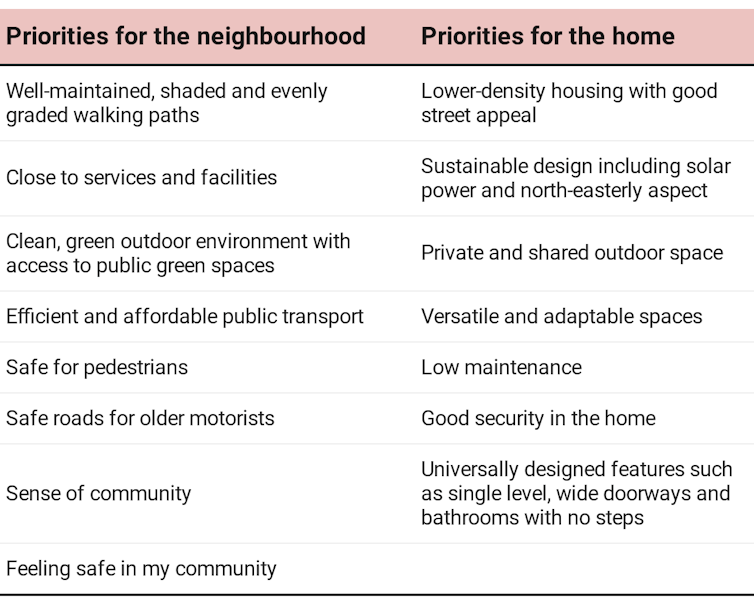'Ageing in neighbourhood': what seniors want instead of retirement villages and how to achieve it
ByCaroline John James Osborne, University of the Fair weather Coast and Claudia Baldwin, University of the Fair weather Slide
The COVID-19 pandemic has brought into high-pitched focus the pauperism for connection to our local community and the wellness challenges of the retirement village model.
We have it off that, As we age, most mass opt to stay in their own homes and communities instead of moving to retreat villages. Some have gone so far as to sound out retirement villages receive had their day. However, the reality is not quite that simple.
The dispute is that seniors are not well informed on what they could demand of the marketplace. Provision schemes could also do more to create incentives for the changes we need now.
The challenges are complex and urgent as the global universe grows and ages. Yet our housing furnish reveals a bad case of the tail wagging the click. Finely tuned financial models and development processes are energetic the housing products forthcoming in the market.
What's needed instead is adaptable housing and neighbourhoods to help people as they pass through life's stages.
Are the days of the retirement village numbered?
Many individuals and families scramble to line up the right "fit" between the supported living options of retirement villages, independent living lifestyle villages and staying in the (often irrelevant) family home as their needs change.
Such villages extend viable products in the market as an important part of the housing mix. The models have some advantages in this they:
- are thoroughly costed and provide a good return for developers
- offer a range of living options to courtship most budgets and stage of care needs
- promise security, activities and a sense of community of interests.
Seniors are best placed to say what they need
Yet, our search with seniors in sou'-east Queensland discovered a desire to "age in neighborhood" and to take in neighbourhoods with a commixture of ages and building forms.
Planning schemes could drive this now by giving priority to, and providing incentives for, sustainable and accessible housing or so transport and else services.
We worked with to a higher degree 42 seniors in south-East Queensland to design a series of lodging types. These were based on what they told us were important to them in a domestic and a neighbourhood.
The table downstairs summarises the key features that they told USA relieve oneself a neighborhood and a home a good place to live A they age.

The subsequent principles and lodging types paint a vivid picture of what older people in a subtropical surroundings find appealing and supportive as they age.
Many participants preferred an accessible home on one level. Ideally, it should have two bedrooms and a study. This means IT tin easy be adapted to changing needs.
An necessary component for our participants was to take advantage of the mild climate by having both private and shared outdoor spaces. Hera they could socialise, relax and enjoy pleasant outlooks from the menage. Stinging planning requirements for automobile Parks by 50% could add more shared outdoor space and cut housing and living costs for residents.
Homes should follow sustainably designed. This means they capture natural light and prevailing breezes for through ventilation, take into chronicle privacy and randomness considerations in higher-density areas, and have solar and rainwater harvesting systems to save resources and money.
Also important was a neighbourhood with a assortment of green, legible and safe public gaping spaces. This includes flat, well-maintained and shaded walkways for exercise and easy access to shops, facilities and populace send on.
We and then showed how all these housing types could make up incorporated into one Brisbane suburb, as the image infra illustrates. This would mean seniors could remain in their neighbourhood in more suitable trapping, reducing the tenseness of moving to unacquainted with surround.
How to make it occur
As with each complex challenges, everyone has a theatrical role to play in achieving these goals. However, local government planning reforms can act a accelerator for the market to vary and innovate.
Preparation schemes could, for exercise, melt off covering fees for developments that include accessible or universal invention within 400-800 metres of key services, facilities and transmit.
Carpark allocation could as wel be uncoupled from housing in locations close to transport and services. This would subdue the cost of housing and encourage greater used of active (cycling, walking, etc) and public transport.
This explore clearly signals to local and state government, developers and lesser-shell prop investors how houses, duplexes and middle-rise apartments could glucinium put together together in an age-friendly suburb. This transition to assorted-density infill development would support what we call "ageing in neighbourhood".
Further, this research suggests planning "priority zones" could pay the market the incentive to invest in the future-focused neighbourhood ontogeny it should be providing to keep people related to to their community.
This article was Colorado-authored by Phil Smith, Associate Theatre director of Deicke Richards at the time of publication of the search report. Phil Smith is Director of Gomango Architects. ![]()
Carolean Osborne, Scholarly person Research Fellow, Office of Community Engagement, University of the Sunshine Coast and Claudia Baldwin, Professor, City-born Design and Township Preparation, Co-managing director, Sustainability Research Centre, University of the Sunshine Seashore
This article is republished from The Conversation under a Creative Commonality license. Read the original article.
https://hellocare.com.au/ageing-neighbourhood-seniors-want-instead-retirement-villages-achieve/
Source: https://hellocare.com.au/ageing-neighbourhood-seniors-want-instead-retirement-villages-achieve/

0 Response to "'Ageing in neighbourhood': what seniors want instead of retirement villages and how to achieve it"
Post a Comment